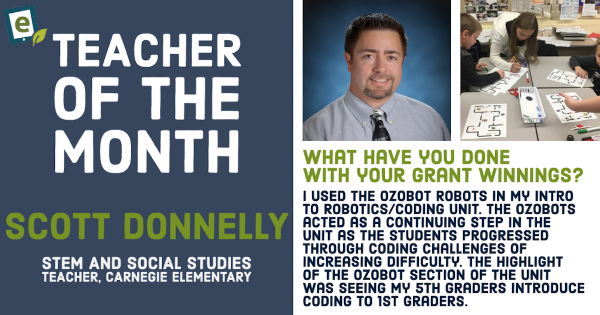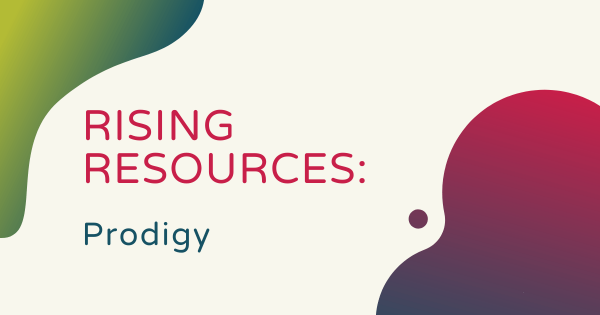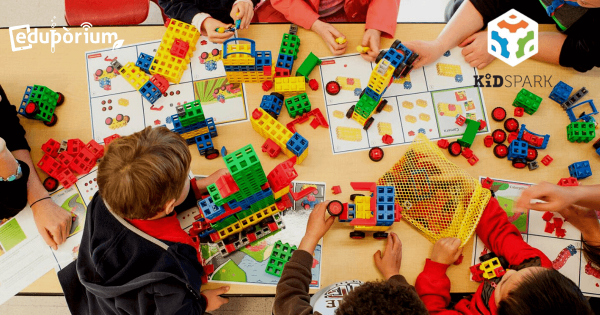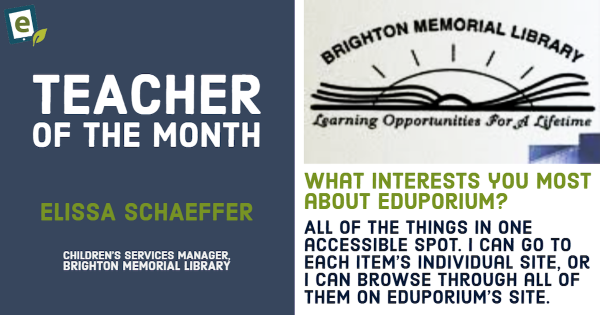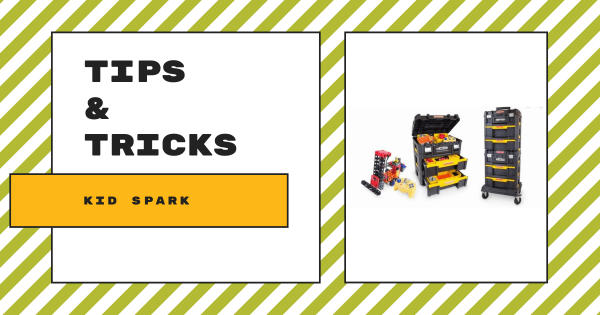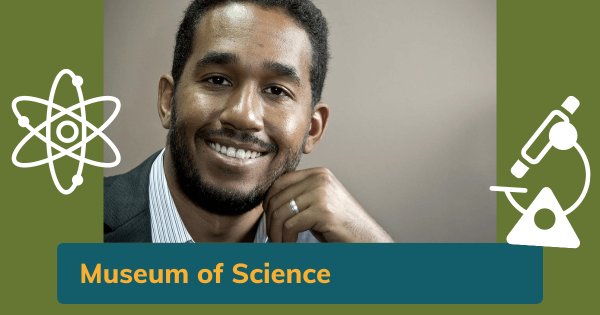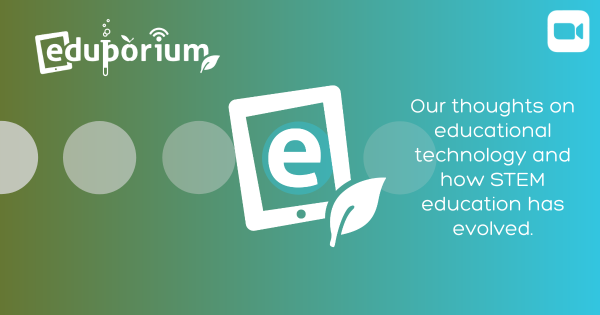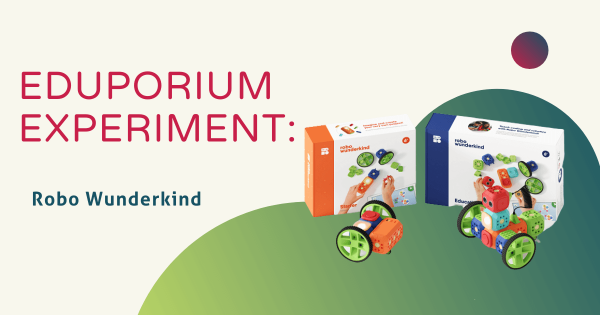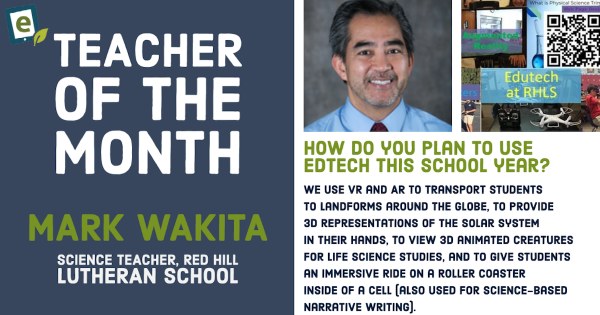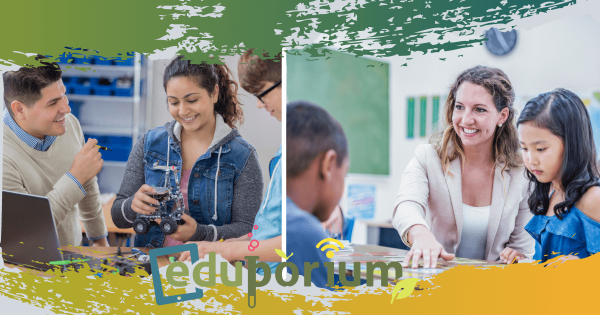We love being able to share these stories and educators’ accomplishments with you and hope this series continues to inspire all educators to try some new things in the classroom! This month, we’re highlighting Scott Donnelly, an elementary STEM teacher from Pennsylvania, who’s been using EdTech he received through our grant to run coding programs for his students!
STEM
When it comes to STEM in 21st century teaching and learning, there are few limits to what students can accomplish. Besides helping boost their overall engagement and enjoyment levels in the here and now, access to STEM learning and opportunities to build real-world skills often significantly improve how students prepare for the future. Whether it's with introducing them to coding in the early grades, engineering in their middle years, or the benefits of more complex technologies, like virtual reality or artificial intelligence, in high school, STEM education is a crucial piece of student development. With such huge potential and importance, however, this instruction requires planning, guidance, and equipment. And, as the economy keeps trending toward STEM-dominated professions and opportunities, exposure to these areas is vital. Thankfully, there are few restrictions to leading effective STEM lessons.
Our mission is helping educators develop students who are truly Future Ready and helping them facilitate relevant learning is how. To that end, we offer a robust online store filled with the latest STEM solutions. But, beyond that, we love creating and sharing impactful content to help enhance how educators use these tools in instruction. In this section of our blog, you'll find countless posts on trending STEM topics, how-to articles, many recommendations for classroom solutions and projects, industry updates, connections between STEAM tools and the future, and a lot more. We are also extremely committed to closing certain gaps and increasing equity in STEM education. As such, a lot of this content contains context for advancing inclusive opportunities for all kids. We encourage you to search through the posts to find something relevant for you. And, if there's any topics we've missed, let us know.
-
Rising Resources | Practice Math with Prodigy
Designed for students between first and eighth grade, Prodigy offers an interactive experience for students to learn specific math concepts in a fun way and at their own pace. Keep reading to learn more about Prodigy and how it offers a successful, game-based option for teaching math! Keep reading to learn more about it. -
Teaching STEM Fundamentals and Concepts with Kid Spark
Kid Spark’s Mobile STEM Labs combine hands-on experience with robust, NGSS-aligned curriculum to inspire lifelong learning and teaching in STEM. Kid Spark’s four mobile STEM labs and detailed curriculum are designed for students in K-8 and are easy to use with or without prior STEM experience and each lab is entirely reusable -
Eduporium Featured Educator: Elissa Schaeffer
We love being able to share their stories and their work with you and hope this series continues to give all educators encouragement to try new things in the classroom! This month, we’re featuring Elissa Schaeffer, who has been using EdTech she received through one of our event raffles to run coding programs for elementary school students! -
Tips & Tricks | Kid Spark's STEM Education Kits
The Kid Spark building kits serve as a great STEAM solution by combining reusability, mathematical precision, and ease of use in building blocks that are as appealing to students as they are to teachers. Kid Spark provides a progressive approach for teaching STEM—from simply counting blocks all the way up to text-based coding for autonomous robots! -
Eduporium CEO Is Voted On To Museum Of Science Board
Boston’s Museum of Science is located right across the Charles River from us. Since they’re all so focused on science, teaching, and STEM education in particular, we have always been big fans of their work, and our CEO and President, Rick Fredkin, in particular has always found himself intrigued by these experts. Now, he will have a more prominent role -
Eduporium Weekly | Breaking Down Our Video Series
Our new video series on our YouTube channel. Hopefully, you’ve had a chance to watch some of the videos, which feature Eduporium co-founder and Chief Strategy Officer, Irina Tuule, and Eduporium co-founder, president, and CEO, Rick Fredkin, discussing a number of relevant topics that pertain to 21st century education. -
Eduporium Experiment | STEAM And The Robo Wunderkind Kits
Plug-and-play accessibility is a pretty common buzzword-like term around the EdTech world. While leaders of almost every company claim to provide solutions that are easy to use right out of the box, not all of them deliver in the ways that the Robo Wunderkind system does. And, that mission starts with an age-appropriate introduction to robotics and STEM in preschool. -
Eduporium Featured Educator: Mark Wakita
Every month, we are highlighting the work of an educator who is effectively utilizing EdTech solutions to empower his or her students with greater 21st century STEM learning experiences. And, this month, we’re featuring Mark Wakita, a science teacher from California, who loves using drones, VR, AR, coding, and movie making to enhance student learning in his classroom! -
Eduporium Weekly | All About EdTech Integration
Why do district leaders create brand-new positions for people or re-assign existing employees to vastly different roles? Well, technology can have lots to do with that and the effectiveness with which teachers can weave it into their school’s curriculum and everyday projects can do a lot for a student’s future, helping to equip them with both hard and soft skills.




